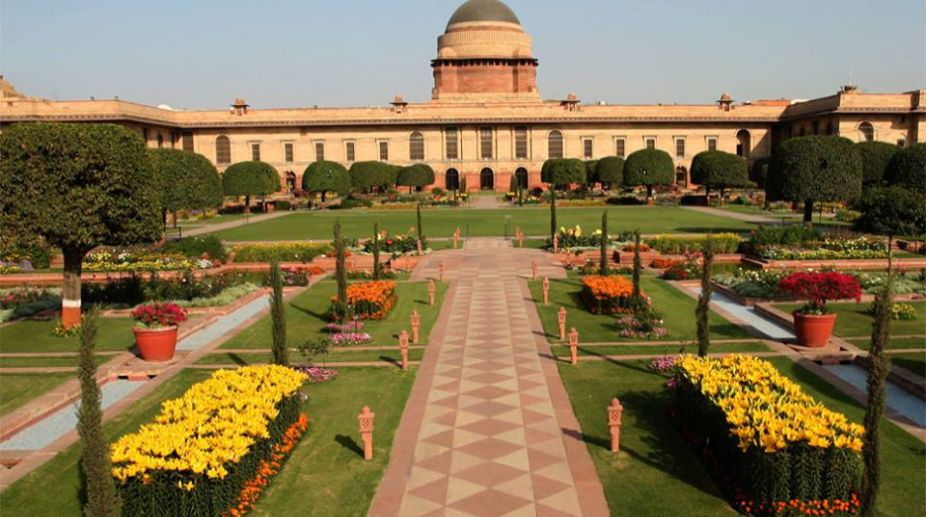Hindu temples must be freed from govt control: VHP
The Vishva Hindu Parishad (VHP) has firmly resolved to free Hindu temples from government control under all circumstances.

Mughal Garden (Photo: Facebook)
The latest installation in the dark pantheon of Hindutva’s anti-heroes is the Mughal emperor Aurangzeb. Had he lived, he would have been exactly 400 years old this year. Dead, he has become the target of barbs poisoned with prejudice.
Generations since Aurangzeb’s death in 1707 have been force-fed the stale gruel that Aurangzeb, the monarch was a narrow-minded, Hindu-hating bigot who wasted his Mughal inheritance in a foolhardy obsession with conquering the Deccan. Some go so far as to assert that he single-handedly rang the death knell of the Mughal Empire.
Advertisement
A few even argue that had Dara Shukoh (Aurangzeb’s eldest brother and rival) not lost the battle for their father’s throne, a post-1947 India would have been one contiguous, homogenous political realm, in which Muslim rulers and their multi-religious subjects would have lived in communal harmony. Four hundred years is too long a time to sustain such wisps of conjecture.
Advertisement
The fact is that Dara Shukoh lost and Aurangzeb won. History can be an impatient judge, often passing a hasty verdict disproportionate to the crime. That is why any biography of Aurangzeb, especially one as unbiased as Audrey Truschke’s Aurangzeb: the Man and The Myth (2017) is a necessary, albeit overdue, corrective.
Aurangzeb was one of 14 children Shah Jahan sired from his beloved Mumtaz Mahal. He and his eldest brother Dara Shukoh could not have been more dissimilar. Dara inherited the aesthetic sense of his forebears, Aurangzeb their martial prowess. Dara Shukoh was a man of letters, a Sufi, an ornamented prince with dreams; Aurangzeb a man of action, a soldier, a ruthless tactician.
Had Aurangzeb possessed the literary flair of his ancestors, he might have left a fuller chronicle of his own reign, as detailed as the Baburnama, the Humayun-nama, the Akbarnama, the Tuzuk-i-Jahangiri, or the equivalent of Shah Jahan’s Padshahnama. Instead, Aurangzeb’s personal reticence, like Cordelia’s, proved to be his undoing. The perfunctory Maasir-i-Alamgiri has been overtaken by less kindly legends.
Aurangzeb’s 88-year-long life falls into four parts. Up to the age of 17, he was brought up in his father’s court and groomed in all the skills Mughal princes needed to govern.
The second phase — from 1635 to 1657 — saw him exercise those skills in the provinces of Balkh, Gujarat and the Deccan. While still in his teens, he fell in love with a Hindu courtesan Hirabhai Zainabadi (he spied her plucking a mango in an orchard). Later he married a Muslim, Dilras Begum. The third phase — 1657 to 1681 — began with the fratricidal war between the sons of Shah Jahan who could not wait for their ailing father to die.
A contemporary described Aurangzeb as a “wolf thirsting for the blood of his brothers”. A fair description, had he been the only wolf in a pack of equally ferocious brothers and sisters.
Once emperor, Aurangzeb ruled from Delhi for 24 years and then moved to the Deccan where he spent the last 26 years of his life, skirmishing with rajas and besieging their forts.
It was as unproductive an enterprise as King George V’s obsession with postage stamps, which, according to his biographer Harold Nicolson, he spent 17 years pasting into albums when he was not shooting animals. Did Aurangzeb spend his last 50 years, as his detractors maintain, destroying Hindu temples and imposing the jizya tax on non-Muslims?
Truschke relies upon the study by a fellow-historian Richard Eaton who “puts the number of confirmed temple destructions during Aurangzeb’s rule as just over a dozen, with fewer tied to the emperor’s direct command”.
More revealing is the edict issued by Aurangzeb (still a prince) to the Hindu Rana Raj Singh of Mewar in 1654: “Because the persons of great kings are shadows of god … that men of various dispositions and different religion should live in the vale of peace and pass their days in prosperity, and no one should meddle in the affairs of another”.
Modernists will recognise a similarity between this benevolent injunction and a speech made on 11 August 1947, by another much-maligned Muslim leader: “You are free; you are free to go to your temples, you are free to go to your mosques or to any other place or worship.…”
In his final years, Aurangzeb (the last of the great Mughals) died hankering after a ripe mango from the plains, just as his ancestor Babur (the first great Mughal) once pined for Kabul’s muskmelons.
Bigots are usually made of sterner stuff. Historians writing of our age will compare the sanguinary Mughal wars of succession with the finesse with which our contemporary leaders wage their sibling rivalries.
One Sharif refuses to dethrone his elder brother, preferring politely to wait until the throne falls vacant. Such exquisite discretion comes from history’s hard lesson that “sitting on a throne is a thousand times harder than winning one”.
Dawn/ANN.
Advertisement